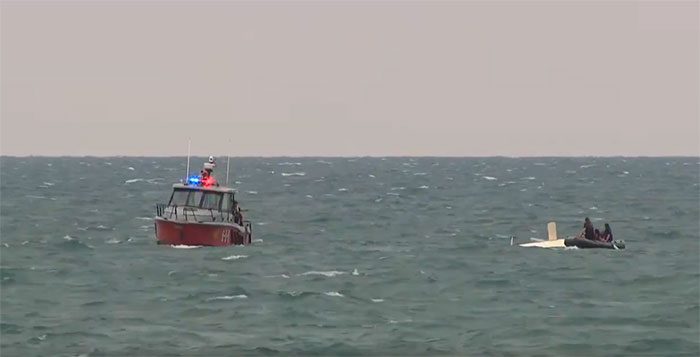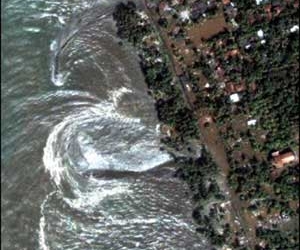The phenomenon of wind blowing onto the shore rapidly decreased the temperature by nearly 10 degrees Celsius at Lake Michigan, which may have caused a boat capsizing on May 16.
Rescue authorities responding to the capsized boat on Lake Michigan. (Video: Fox 13).
The boat capsized near Beach 31 in Chicago after a sudden gust of wind significantly altered the temperature in the area. All individuals on board were rescued in time. The accident was caused by a weather phenomenon unique to this region known as the “pneumonia front.” This phenomenon occurs when cold winds from Lake Michigan accelerate inland, causing a sharp drop in temperature, according to Newsweek.
This term was coined by the National Weather Service in the 1960s to describe the moment when temperatures can plummet by nearly 9 degrees Celsius in just one hour. The phenomenon typically occurs from April to July. Boats can capsize due to various types of severe weather conditions, but strong winds associated with the pneumonia front are likely to be the cause of this incident.

The phenomenon ends within a day, but cold weather conditions persist for several days.
Capsizing can occur when someone standing on the boat encounters a sudden gust of wind, or when the weight of the boat is unevenly distributed. The National Weather Service predicted the pneumonia front just a few days before it reached the area. Experts note that this phenomenon can lead to temperature drops exceeding 13 degrees Celsius in less than an hour. The southwestern region of Wisconsin was also affected. Although sudden changes in temperature may seem hard to believe, they often pass quickly.
According to reports, the phenomenon concludes within a day, but cold weather conditions can linger for several days. Lake Michigan is large enough to create its own weather patterns. This body of water plays a crucial role in influencing the climate and temperatures in Chicago and parts of Illinois and Wisconsin. Winds over the lake help cool summer temperatures but can also bring warmth in winter. Cool air masses over the lake can increase rainfall or snowfall.





















































